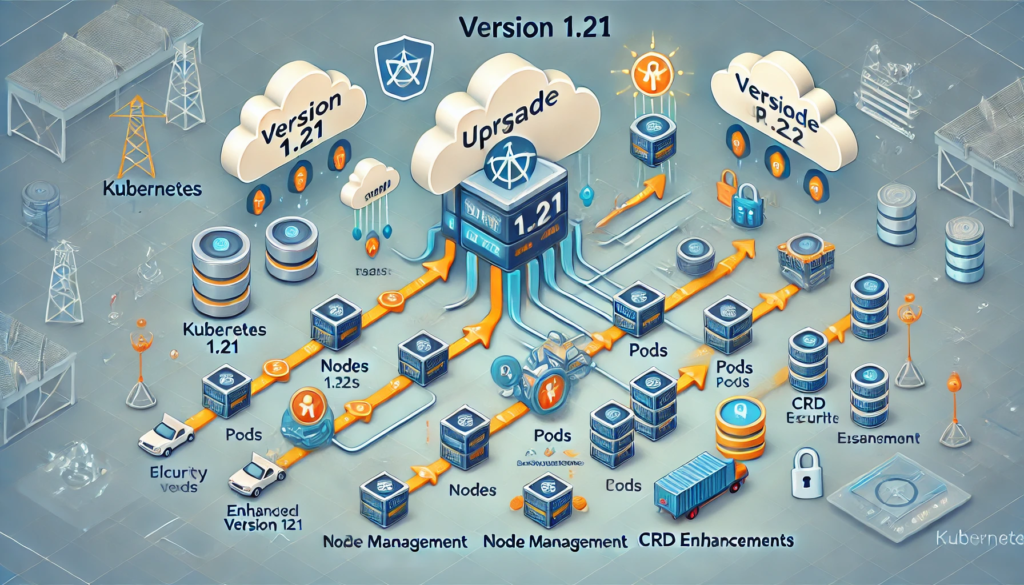Upgrading Kubernetes: A Step-By-Step Guide From Version 1.21 To 1.22

Introduction
Upgrading Kubernetes is essential for leveraging new features, enhanced security, and overall stability. The transition from Kubernetes version 1.21 to 1.22 introduces significant updates, improved APIs, and various new functionalities that optimize cluster management and support scalability. However, upgrading requires careful planning and execution to avoid service disruptions, ensure backward compatibility, and maintain configuration integrity across the cluster.
Key Features of Upgrading from Kubernetes 1.21 to 1.22
- API Deprecations and Removals
Kubernetes 1.22 introduces several API deprecations and removals, particularly concerning older beta APIs that are replaced by stable versions. For instance, APIs related to Ingress, Pod Disruption Budget, and other core resources are upgraded, which means you’ll need to adapt existing deployments accordingly. - Enhanced Security Measures
The 1.22 release prioritizes security by implementing key changes in the TokenRequest and CertificateSigningRequest APIs, ensuring more robust access control mechanisms. This upgrade helps maintain a secure production environment by preventing unauthorized access to critical resources. - Improved Node Management and Performance Optimization
Kubernetes 1.22 provides better control over nodes, allowing more efficient scheduling, resource allocation, and load balancing across clusters. This version introduces enhancements to the node lifecycle, offering stability for high-load applications by making scheduling and resource assignments more precise. - Updated CRD (Custom Resource Definition) Capabilities
Version 1.22 expands support for CRDs by adding new features, such as defaulting and validation capabilities. This makes managing custom resources more consistent and reliable, allowing users to define schemas more effectively and automate validation processes, which can help prevent misconfigurations and errors. - Improved Command-Line Tools and Usability
kubectl has several usability enhancements in version 1.22, with improved commands and features for debugging, monitoring, and managing workloads. These additions aim to improve productivity for administrators and developers by making day-to-day Kubernetes operations more straightforward and less error-prone.
Conclusion
Upgrading Kubernetes from 1.21 to 1.22 provides numerous benefits, from enhanced security and API stability to optimized performance. Although it requires planning and careful execution, following a step-by-step approach ensures a smooth transition, minimizes risks, and helps you harness the latest Kubernetes features effectively.






Responses